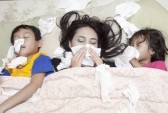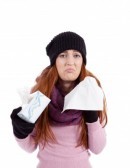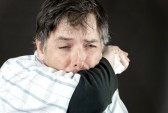Beating those winter blues! After the decorations are put away, the celebrations are over, the New Year has begun: and the post holiday winter blues are starting to hit you and your host family. What can you do to get through the long cold winter months happily? Get outside every day with the kids, bundle up and play outside. Go to the park, take a walk, ride bikes; we have been having an unusually warm winter, so enjoy it! Even when cold, it is important to get out and get fresh air. Stay on routine with the kids; get up on time, have breakfast, get to the bus stop on time. Make sure homework is done and everyone gets to their activities on time. Bedtime routines are important, make sure everyone gets enough sleep and that includes YOU! Register for your classes, and get ready to start learning something new! Call a friend and meet for coffee and conversation if you feel housebound. Set up a play date with another au pair and her host children (similar ages) and enjoy a day together! Join a gym with another au pair! Use the library in your town. Sign the kids up for free programs (talk to host parents about the programs!) Join the English conversation group, improve your English and meet people! Prepare a Global Awareness presentation for one of your host kids’ classes, ask me for help! Volunteer at a local hospital, school, animal shelter, food bank if you have extra time on your hands and need to do something! Doing for others is always an answer for the blues!! Come to our next cluster meeting and meet some new friends! And, don’t forget your calendar on the website filled with great ideas and activities to do with your host kids! www.aupairinamerica.com hit current au pair resources and calendar of the season.
Tag Archives: au pair
Keep Healthy This Cold and Flu Season
Keep Healthy This Cold and Flu Season!
Here are a few tips that are helpful in keeping yourself and your host children healthy this winter season.

1. Wash your hands often and thoroughly with warm, soapy water. Say your abc song to make sure you are washing long enough!
2. Keep your hands away from your eyes, nose and mouth. Make a habit of never touching your face.
3. Don’t leave your used tissues lying around. Wash your hands after throwing them away. 
4. Routinely disinfect shared objects at home. Don’t forget the keyboard of computers and the TV remote. Door knobs and stair rails are places to clean as well.
5. Consider getting a flu shot. It is a myth that the shot will make you sick. The flu shot can prevent most flu infections.
6. Cover your nose and mouth with a tissue on the inside of your arm when you sneeze or cough. Flu germs can travel up to 20 feet very quickly. 
7. If you are sick avoid going to crowded places and keep your distance from family members.
8. Get enough rest. Don’t be tempted to stay out late with friends. Let your body have a chance to heal.
9. If a fever last more than three days, see a doctor.
10. Keep cool air circulating and surfaces dry. Germs like moist, warm environments.

More Tips for Fire Safety and Prevention: Basic Home Fire Escape Planning.
October 7-13 is Fire Safety and prevention week!
Fire Prevention Week was established to commemorate the Great Chicago Fire, the tragic 1871 conflagration that killed more than 250 people, left 100,000 homeless, destroyed more than 17,400 structures and burned more than 2,000 acres. http://www.firepreventionweek.org):
Basic fire escape planning:
Your ability to get out depends on advance warning from smoke alarms and advance planning.
- Pull together everyone in your household and make a plan. Include the Au pair in your home in this discussion. Walk through your home and inspect all possible exits and escape routes. Households with children should consider drawing a floor plan of your home, marking two ways out of each room, including windows and doors. Also, mark the location of each smoke alarm. For easy planning, download NFPA’s escape planning grid (PDF, 634 KB). This is a great way to get children involved in fire safety in a non-threatening way.
- Install smoke alarms in every sleeping room, outside each sleeping area and on every level of the home. NFPA 72, National Fire Alarm Code® requires interconnected smoke alarms throughout the home. When one sounds, they all sound.
- Everyone in the household must understand the escape plan. When you walk through your plan, check to make sure the escape routes are clear and doors and windows can be opened easily.
- Choose an outside meeting place (i.e. neighbor’s house, a light post, mailbox, or stop sign) a safe distance in front of your home where everyone can meet after they’ve escaped. Make sure to mark the location of the meeting place on your escape plan.
- Go outside to see if your street number is clearly visible from the road. If not, paint it on the curb or install house numbers to ensure that responding emergency personnel can find your home.
- Have everyone memorize the emergency phone number of the fire department. That way any member of the household can call from a neighbor’s home or a cellular phone once safely outside.
- If there are infants, older adults, or family members with mobility limitations, make sure that someone is assigned to assist them in the fire drill and in the event of an emergency. Assign a backup person too, in case the designee is not home during the emergency.
- If windows or doors in your home have security bars, make sure that the bars have emergency release devices inside so that they can be opened immediately in an emergency. Emergency release devices won’t compromise your security – but they will increase your chances of safely escaping a home fire.
- Tell guests or visitors to your home about your family’s fire escape plan. When staying overnight at other people’s homes, ask about their escape plan. If they don’t have a plan in place, offer to help them make one. This is especially important when children are permitted to attend “sleepovers” at friends’ homes. See NFPA’s “Sleepover fire safety for kids” fact sheet.
- Be fully prepared for a real fire: when a smoke alarm sounds, get out immediately. Residents of high-rise and apartment buildings may be safer “defending in place.”
- Once you’re out, stay out! Under no circumstances should you ever go back into a burning building. If someone is missing, inform the fire department dispatcher when you call. Firefighters have the skills and equipment to perform rescues.
Putting your plan to the test
- Practice your home fire escape plan twice a year, making the drill as realistic as possible.
- Make arrangements in your plan for anyone in your home who has a disability.
- Allow children to master fire escape planning and practice before holding a fire drill at night when they are sleeping. The objective is to practice, not to frighten, so telling children there will be a drill before they go to bed can be as effective as a surprise drill.
- It’s important to determine during the drill whether children and others can readily waken to the sound of the smoke alarm. If they fail to awaken, make sure that someone is assigned to wake them up as part of the drill and in a real emergency situation.
- If your home has two floors, every family member (including children) must be able to escape from the second floor rooms. Escape ladders can be placed in or near windows to provide an additional escape route. Review the manufacturer’s instructions carefully so you’ll be able to use a safety ladder in an emergency. Practice setting up the ladder from a first floor window to make sure you can do it correctly and quickly. Children should only practice with a grown-up, and only from a first-story window. Store the ladder near the window, in an easily accessible location. You don’t want to have to search for it during a fire.
- Always choose the escape route that is safest – the one with the least amount of smoke and heat – but be prepared to escape under toxic smoke if necessary. When you do your fire drill, everyone in the family should practice getting low and going under the smoke to your exit.
- Closing doors on your way out slows the spread of fire, giving you more time to safely escape.
- In some cases, smoke or fire may prevent you from exiting your home or apartment building. To prepare for an emergency like this, practice “sealing yourself in for safety” as part of your home fire escape plan. Close all doors between you and the fire. Use duct tape or towels to seal the door cracks and cover air vents to keep smoke from coming in. If possible, open your windows at the top and bottom so fresh air can get in. Call the fire department to report your exact location. Wave a flashlight or light-colored cloth at the window to let the fire department know where you are located.
URL: http://www.nfpa.org/itemDetail.asp?categoryID=406&itemID=17735&URL=Safety%20Information/For%20consumers/Escape%20planning/Basic%20fire%20escape%20planning
October 7-13 is Fire Safety and Prevention Week!
October 7-13 is Fire Safety and prevention week.
Two of the most common causes of accidental fires are related to cooking and the use of candles. Consider these tips and stay safe!
Fire Prevention Week was established to commemorate the Great Chicago Fire, the tragic 1871 conflagration that killed more than 250 people, left 100,000 homeless, destroyed more than 17,400 structures and burned more than 2,000 acres. http://www.firepreventionweek.org:
Cooking safety tips
Cooking fires are the number one cause of home fires and home injuries. The leading cause of fires in the kitchen is unattended cooking. It’s important to be alert to prevent cooking fires.
- Be on alert! If you are sleepy or have consumed alcohol don’t use the stove or stovetop.
- Stay in the kitchen while you are frying, grilling, or broiling food. If you leave the kitchen for even a short period of time, turn off the stove.
- If you are simmering, baking, roasting, or boiling food, check it regularly, remain in the home while food is cooking, and use a timer to remind you that you are cooking.
- Keep anything that can catch fire — oven mitts, wooden utensils, food packaging, towels or curtains — away from your stovetop.
If you have a cooking fire
- Just get out! When you leave, close the door behind you to help contain the fire.
- Call 9-1-1 or the local emergency number after you leave.
- If you try to fight the fire, be sure others are getting out and you have a clear way out.
- Keep a lid nearby when you’re cooking to smother small grease fires. Smother the fire by sliding the lid over the pan and turn off the stovetop. Leave the pan covered until it is completely cooled.
- For an oven fire turn off the heat and keep the door closed.
URL: http://www.nfpa.org/itemDetail.asp?categoryID=1695&itemID=41075&URL=Safety%20Information/For%20consumers/Causes/Cooking/Cooking%20safety%20tips
Candle safety tips
Candles may be pretty to look at but they are a cause of home fires — and home fire deaths. Remember, a candle is an open flame, which means that it can easily ignite anything that can burn.
- Blow out all candles when you leave the room or go to bed. Avoid the use of candles in the bedroom and other areas where people may fall asleep.
- Keep candles at least 12 inches away from anything that can burn.
- Think about using flameless candles in your home. They look and smell like real candles.
If you do burn candles, make sure that you…
- Use candle holders that are sturdy, and won’t tip over easily.
- Put candle holders on a sturdy, uncluttered surface.
- Light candles carefully. Keep your hair and any loose clothing away from the flame.
- Don’t burn a candle all the way down — put it out before it gets too close to the holder or container.
- Never use a candle if oxygen is used in the home.
- Have flashlights and battery-powered lighting ready to use during a power outage. Never use candles.
Be Ready! September is National Preparedness Month
Be Ready! September is National Preparedness Month
Families should be prepared for all types of emergencies; this includes a fire, winter storm, tornado, hurricane, etc. Developing a national disaster plan is extremely important for every family to have. Having an emergency kit for the home and car is a great way to get started.
- Discuss where to meet if a disaster happens (be prepared to lose cell service)
- An emergency kit prepared for the home and car
If you are at work, will your au pair be prepared? Take some time this month to discuss what you would like her to do in the event of an emergency. To find more detailed information provided by FEMA click here! We will be discussing fire safety and prevention at our cluster meeting this month.
Your emergency kit could include:
- Identification for all family members (Social Security card, passport, license, etc.)
- First aid kit
- Water
- Food
- Flashlight
- Batteries
- Local Maps
- Manual can opener
- Wrench or pliers to turn off utilities
- Cell phone with chargers for car and basic outlet
- Dust mask
Supplies for your vehicle or the Au pair car could include:
- Bottled water and non-perishable foods such as granola bars.
- Seasonal supplies: Winter – blanket, hat, mittens, shovel, sand, tire chains, windshield scraper, florescent distress flag; summer – sunscreen lotion (SPF 15 or greater), shade item (umbrella, wide brimmed hat, etc.).
- Flashlight, extra batteries, and maps.
- First aid kit and manual.
- White distress flag.
- Tire repair kit, booster/jumper cables, pump, and flares.
http://www.cdc.gov/features/beready/
